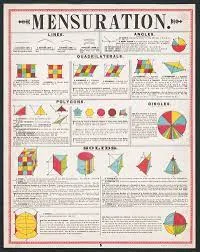Definition: A Hexagon Calculator would be a tool or program designed to calculate various properties of a hexagon, such as its perimeter, area, interior angles, and so on.
Click the Translate button(see right) on this post to set your Own Language to understand more perfectly!!
Hexagon Calculator
Continue Definition with an Example:
Here are the equations and examples for some common calculations related to hexagons:
Perimeter (P): The perimeter of a hexagon is the sum of the lengths of all its six sides.Equation: 𝑃=6×𝑠
where "s" is the length of a side.
Example: If the length of each side of a hexagon is 5 units, then its perimeter would be P=6×5=30 units.
Area (A): The area of a hexagon can be calculated in various ways, depending on the information available. One common method is to divide the hexagon into six equilateral triangles and then find the area of one of those triangles.
Equation: 𝐴=[{3x(3**1/2)}/2]×𝑠**2, where "s" is the length of a side.Example: If the length of each side of a hexagon is 5 units, then its area would be ≈64.95 square units.
Interior Angle (θ): The interior angle of a regular hexagon (where all sides and angles are equal) can be calculated by dividing the sum of all internal angles by the number of sides.
Equation: 𝜃={(𝑛−2)×180°/𝑛}
n is the number of sides.
Example: For a regular hexagon, 𝑛=6
so the interior angle would be =120°.
Apotem (a): The apotem is the distance from the center of the hexagon to the midpoint of one of its sides.
Equation: 𝑎=(𝑠/2)×3**0.5 , where "s" is the length of a side.
Example: If the length of each side of a hexagon is 5 units, then its apotem would be
𝑎=(5/2)×3**0.5≈2.89≈2.89 units.
These equations can be implemented in a Hexagon Calculator tool or program to provide quick and accurate calculations for various properties of hexagons.
How it is possible to earn money using Hexagon Calculation????
Here are several real-life scenarios where a Hexagon Calculator can be used to earn money or facilitate various tasks:
1. **Construction and Carpentry**: Carpenters and construction workers often need to calculate the perimeter and area of hexagonal structures, such as tiles or paving stones for floors or patios. By accurately estimating the amount of material needed, they can save money on materials and labor costs.
2. **Landscaping and Gardening**: Landscapers and gardeners may use hexagonal shapes for designing flower beds, paving patterns, or even beehives. Calculating the area of these hexagonal spaces helps them determine the amount of soil, mulch, or plants required, optimizing resources and potentially increasing profits.
3. **Manufacturing and Fabrication**: Manufacturers producing hexagonal products, such as nuts, bolts, or hexagonal tubing, rely on precise measurements to ensure quality and efficiency in production. Using a Hexagon Calculator can aid in determining dimensions, material quantities, and production costs.
4. **Graphic Design and Art**: Artists and graphic designers might incorporate hexagonal patterns or shapes into their designs for logos, packaging, or decorative elements. Calculating the dimensions and proportions of these hexagons ensures symmetry and aesthetic appeal, enhancing the marketability of their work.
5. **Engineering and Architecture**: Engineers and architects frequently encounter hexagonal structures in various applications, such as architectural facades, structural supports, or urban planning layouts. Precise calculations using a Hexagon Calculator contribute to the design process, ensuring structural integrity, functionality, and adherence to budget constraints.
6. **Education and Tutoring**: Math educators and tutors can utilize Hexagon Calculators to teach geometry concepts to students. By demonstrating real-life applications of hexagons and their properties, educators enhance student understanding and engagement, potentially leading to improved academic performance.
7. **Real Estate and Property Development**: Real estate developers and agents may use hexagonal shapes in site planning, subdivision layouts, or property boundary delineation. Accurate calculations of hexagon dimensions and areas aid in property valuation, zoning compliance, and marketing strategies, ultimately influencing sales and profitability.
8. **Game Development**: Game developers may incorporate hexagonal grids or tiles in strategy games, board games, or simulations. Calculating the positioning, movement, and interactions of hexagonal game elements requires precise geometric calculations, enhancing gameplay experience and commercial success.
These are just a few examples of how a Hexagon Calculator can be utilized across various industries and professions to facilitate tasks, optimize resources, and ultimately contribute to earning money or achieving other objectives in real life.
Do YOU Want To Earn Money In Various Ways, Click The Link & Explore Your Field of Interest!!!











